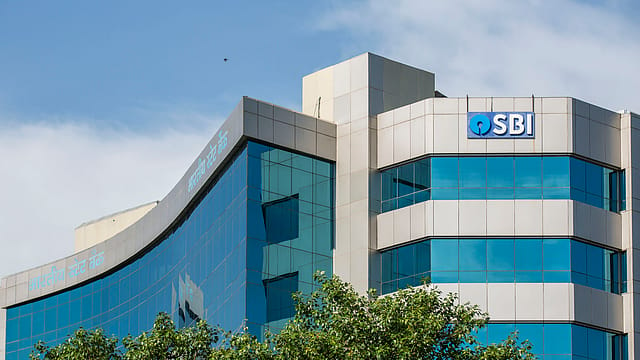‘Ample liquidity, easing inflation’: SBI Research forecasts 50 bps rate cut by RBI in June policy meeting
ADVERTISEMENT

The research arm of the State Bank of India has projected a bold 50-basis-point (bps) repo rate cut in the upcoming Reserve Bank of India (RBI) monetary policy committee meeting, scheduled from June 4 to 6. The jumbo cut is needed to counteract rising global uncertainty and ensure that India’s domestic growth momentum remains intact in the face of softening inflation and slowing global demand, the report says.
“Rate transmission is already underway, and liquidity conditions are strong. A decisive cut now can help the RBI get ahead of the curve and prevent a deeper growth slowdown in a globally uncertain environment,” the report adds. SBI Research believes that with inflation well-anchored and financial conditions favourable, the time is ripe for the RBI to shift decisively toward growth support. A 50-bps cut in June could start a 100-bps easing cycle over the next few quarters, thus reviving credit demand and private investment.
Liabilities are getting repriced faster in the current easing cycle as banks slash savings deposit rates to the floor of 2.7%, and fixed deposit rates have fallen by 30-70 bps from February, SBI Research argues. With system liquidity already in surplus and the RBI transferring a hefty ₹2.68 lakh crore as dividend, core liquidity is expected to touch ₹5.3 lakh crore by end-June. “Ample liquidity, receding financial stability risks, and inflation projected at just 3.5% in FY26, all point to room for a deeper rate cut,” the report says.
December 2025
The annual Fortune 500 India list, the definitive compendium of corporate performance, is out. This year, the cumulative revenue of the Fortune 500 India companies has breached $2 trillion for the first time. Plus, find out which are the Best B-schools in India.
SBI Research also questions whether it is time to introduce an external benchmark-linked rate (EBLR) regime for NBFCs, similar to banks, to ensure better transparency and transmission.
The report flags a 50-bps downgrade in global GDP growth forecasts in 2025 due to trade protectionism and macroeconomic uncertainty. China’s growth is pegged to slow by 130 bps, and India’s by 20–30 bps. Global inflation is easing more slowly than expected, while emerging markets like China face deflationary trends.
Meanwhile, U.S. fiscal consolidation remains elusive. The U.S. government’s fiscal deficit for October-April FY25 surged to $1.049 trillion from $855 billion in the same period a year earlier. This is expected to keep US bond yields elevated and financial market volatility high, the report states.
Despite a moderation in Q4 FY25 GDP growth to 7.4% (from 8.4% in Q4 FY24), capital formation surged 9.4% YoY, signalling continued investment momentum. The IMD’s above-normal monsoon forecast, easing crude prices, and abundant food supply are expected to keep inflation soft, with no significant demand-side pressures.
The Indian corporate sector remains cautious. Cash and bank balances of listed companies (ex-BFSI) have risen from ₹5 lakh crore in FY14 to an estimated ₹13.5 lakh crore in FY25, reflecting rising risk aversion amid global turbulence. Yet, FY25 saw new investment announcements surpass ₹50 lakh crore—up from ₹10 lakh crore in FY21—largely driven by public and private capex.
The banking sector continues to deliver strong results. Public sector banks posted a 26% YoY profit jump, compared to 5.8% for private peers. Credit growth has slowed to 9.8% as of mid-May, narrowing the gap with deposit growth and easing pressure on bank funding.
